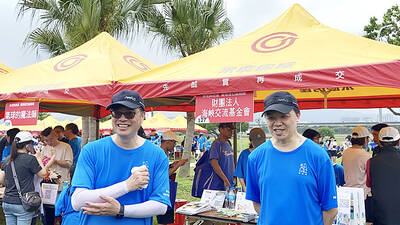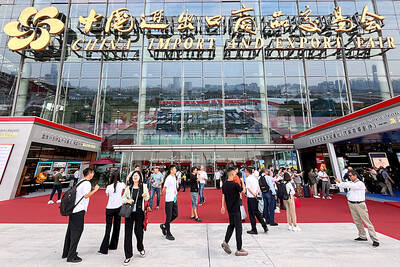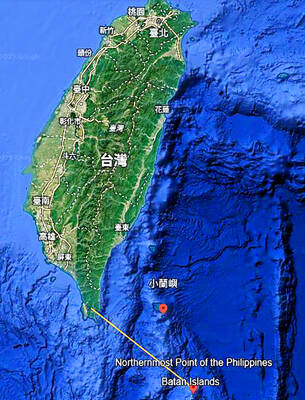Foreign brewers -- driven from China in the late 1990s by tough domestic competition -- are planning wary forays back into the world's second-largest market, but analysts warn they may end up crying in their beer again.
China's leading brewers like Tsingtao and Yanjing humbled vastly larger global players over the past decade, offering local brands that flew off shelves at a fifth the price and driving foreign rivals off, many of them bleeding red ink.
Now, foreign brewers like Japan's Kirin are drawing up strategy for another run at China, still intoxicated by a US$6 billion market that analysts say is expanding five percent yearly.
But the going hasn't got any easier. Brewers accustomed to making premium brands, less than a tenth of all beer sold in the country, will find it difficult to gain a foothold where it counts -- China's mass market, analysts said.
The stakes are high. China produced 11.33 million tonnes of beer in the first half of 2001 and will soon overtake the United States as the biggest market for lager on the planet.
Another sign of promise, the average Chinese drinks just 18 litres of beer yearly versus a world average of about 50.
But high operating costs mean foreign brewers can hope for only a slice of a tiny premium segment of about 23 million hectolitres a year that yields paltry returns, analysts say.
"In three to five years time I will still believe in local beers, they will be dominant," said Grace Mak, Merrill Lynch's beverage analyst in Hong Kong.
"The market is very big and it's very fragmented, there are too many brands already. So for foreign companies coming to China, it will take a few years for them to learn the lessons before they can really get a big market share."
What Happened?
Brewers like Kirin, who purchased a 15 percent stake in Philippine firm San Miguel partly because of its southern Chinese breweries, are likely to face the same hurdles as other bright-eyed entrants during the foreign investment peak in 1995.
World number three Interbrew had also courted San Miguel as a way into China, an industry source told reporters.
Some of the biggest names in the industry are still nursing hangovers after trying to crash the party in a sector first opened to foreign investment in the early 1990s.
Foster's scaled back operations, while Denmark's Carlsberg bailed out of its major ventures.
Having overestimated the buying power of the affluent middle class, they discovered China's drinkers shunned brands brewed outside their home region.
"It was all the rage at the time to flock to China. But the foreign beermakers were too optimistic on the tiny premium sector," said Zhang Ruixiang, a board member at China's largest brewer, Tsingtao Brewery.
Government support for ailing brewers and local price wars in a rowdy market with more than 450 breweries meant some beers sold at a rock bottom one yuan (US$0.12) a bottle, as opposed to six to eight yuan for foreign lager.
"The first round they lost but some of these guys are prepared for a second fight," said Foo Choypeng of Worldsec International. "If you go to the supermarkets and have a look, some beers are selling at prices lower than mineral water."
A German Story
Some, like South African Breweries, have prospered through local partnerships. But most foreign players can at best hope to snare parts of markets in clearly defined geographic regions, as with Japanese brews in Shanghai, analysts said.
Global behemoths may never replicate the success of Tsingtao, a local legend dating back to 1903, which bought 38 breweries in four years and saw market share balloon to 11 percent.
Introduced to Americans in 1972 and now imbibed in more than 30 countries, Tsingtao succeeded by adapting to local markets, often eschewing its own brand to market an acquired local beer.
"Don't dream that in three years' time you can become a national brand. That's unrealistic in China," said Geoffrey Cheng, HSBC's analyst in Hong Kong. "If you want to be successful you have to be focused on a particular regional market."
Still, WTO entry will prompt local governments to prise open protected markets and halt the flow of financial aid that keeps China's ailing breweries running, analysts said.
Speedier consolidation also means the field will get less crowded, as China's beer triumvirate of Tsingtao, market runner-up Yanjing Brewery and cash-rich CRE Beverage Ltd continue to pick up failed plants at bargain-basement prices.
There's plenty of room to grow: the trio account for only a quarter of beer made in China. US brewer Anheuser-Busch -- which makes Budweiser -- rules 48 percent of its home market.
And there are signs global players have become more savvy. Japan's Asahi has made headway by focusing on lowering costs through a venture with Tsingtao in Shenzhen.
Foster's, which now operates a lone Shanghai factory, aims to break even by 2003 or 2004 after entering China in the mid-1990s.
And fellow Australian brewer Lion Nathan -- also no stranger to losing money in China -- plans to soldier on after narrowing losses by 32 percent in the last financial year.
"We're in danger of being the last man standing, which means we're actually making money in China," chief executive Gordon Cairns quipped during a November news conference.

SECURITY: As China is ‘reshaping’ Hong Kong’s population, Taiwan must raise the eligibility threshold for applications from Hong Kongers, Chiu Chui-cheng said When Hong Kong and Macau citizens apply for residency in Taiwan, it would be under a new category that includes a “national security observation period,” Mainland Affairs Council (MAC) Minister Chiu Chui-cheng (邱垂正) said yesterday. President William Lai (賴清德) on March 13 announced 17 strategies to counter China’s aggression toward Taiwan, including incorporating national security considerations into the review process for residency applications from Hong Kong and Macau citizens. The situation in Hong Kong is constantly changing, Chiu said to media yesterday on the sidelines of the Taipei Technology Run hosted by the Taipei Neihu Technology Park Development Association. With

CARROT AND STICK: While unrelenting in its military threats, China attracted nearly 40,000 Taiwanese to over 400 business events last year Nearly 40,000 Taiwanese last year joined industry events in China, such as conferences and trade fairs, supported by the Chinese government, a study showed yesterday, as Beijing ramps up a charm offensive toward Taipei alongside military pressure. China has long taken a carrot-and-stick approach to Taiwan, threatening it with the prospect of military action while reaching out to those it believes are amenable to Beijing’s point of view. Taiwanese security officials are wary of what they see as Beijing’s influence campaigns to sway public opinion after Taipei and Beijing gradually resumed travel links halted by the COVID-19 pandemic, but the scale of

A US Marine Corps regiment equipped with Naval Strike Missiles (NSM) is set to participate in the upcoming Balikatan 25 exercise in the Luzon Strait, marking the system’s first-ever deployment in the Philippines. US and Philippine officials have separately confirmed that the Navy Marine Expeditionary Ship Interdiction System (NMESIS) — the mobile launch platform for the Naval Strike Missile — would take part in the joint exercise. The missiles are being deployed to “a strategic first island chain chokepoint” in the waters between Taiwan proper and the Philippines, US-based Naval News reported. “The Luzon Strait and Bashi Channel represent a critical access

Pope Francis is be laid to rest on Saturday after lying in state for three days in St Peter’s Basilica, where the faithful are expected to flock to pay their respects to history’s first Latin American pontiff. The cardinals met yesterday in the Vatican’s synod hall to chart the next steps before a conclave begins to choose Francis’ successor, as condolences poured in from around the world. According to current norms, the conclave must begin between May 5 and 10. The cardinals set the funeral for Saturday at 10am in St Peter’s Square, to be celebrated by the dean of the College